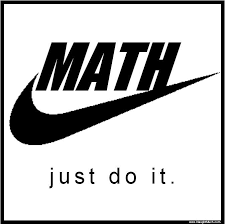Blog 31: Angle Relationships
Angle relationship can help you how to figure out the measurement of angle without actually having to measure by knowing one or the other chances are you’ll know what the other angles measurement is.Some angle relationships are Complementary angles; the measurement of both of these angles sum equals 90 degrees.Supplementary Angles the measurement of both angles equals 180. Adjacent Angles share a common side and Congruent angles same measurement.
Blog 32:Angles in a Triangle
To find the area of a triangle you must multiply its base and its height then divided by 2. For example if the base is 4 and the height is 6 you multiply those together its 24 then you divided by 2 which is 12 so the area of the triangle is 12.
Blog 33:Triangle Inequality
For triangle inequality we learned about which combinations of side lengths make triangles and which don’t. For example 1,2,24 don’t make a triangle since the angles are to acute or to obtuse.how ever 2,4,4.5 can make a triangle because the hypotenuse is nearly eaual to the sum of the other three triangles.
Blog 34:Triangle Side Length
For triangle side lengths the sum of the small and medium triangle are greater than the bigger triangle its acute.If the small and medium sum are the same the same they are equal.If the sum of the small and medium triangle are greater than its obtuse.However it will only form a triangle if the small and large length are greater than the middle length otherwise it wont form a triangle.
Blog 35: Square Roots
A square root is a number that produces a specified quantity when multiplied by itself.There are some square roots known as perfect squares for example 4 is one because 2 times 2 equals 4.Square roots help you get real close to what a number might be so you can round to tenth or hundreds place.
Blog 36: Pythagorean Theorem
The Pythagorean Theorem states that the square of the hypotenuse the side opposite the right angle is equal to the sum of the squares of the other two sides.So for example if the small square is 2 and the medium one is 4 you square them and add them so they equal 20.You then grab 20 and square root it to find the hypotenuse you then round and the hypotenuse is 4.5.If a leg is missing that isn’t the hypotenuse you do the same things except you subtract.










Leave a Reply